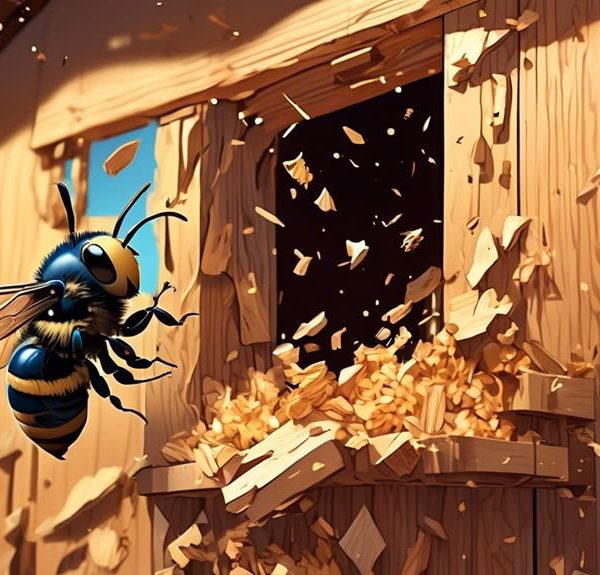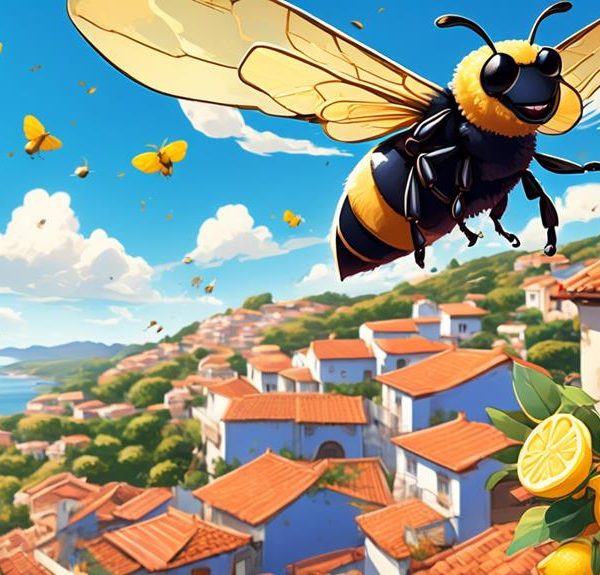Witness the captivating world of carpenter bees, their unique reproduction cycle, and intriguing quirks that set them apart; ready to dive in?
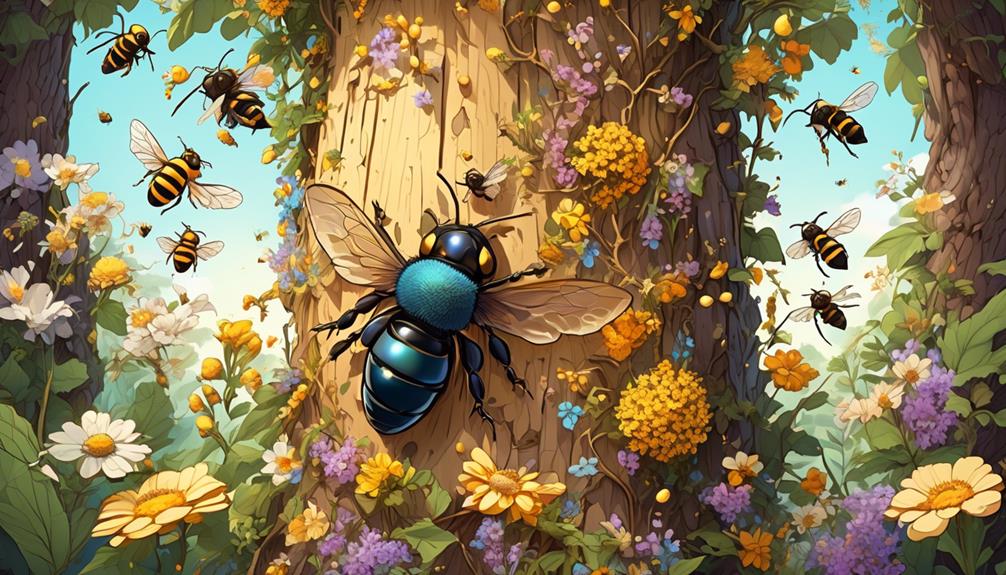
Carpenter Bee Reproduction Cycle
So, you're curious about the birds and the bees, or in this case, just the bees—specifically, the fascinating carpenter bees. You're not alone. These intriguing insects have a unique reproductive cycle that's worth exploring.
From the initial courtship dances to their nesting habits, there's a lot to discover.
Their lifecycle, which includes several stages from egg to adult, is as complex as it is captivating.
But here's the kicker: they have a few quirks that set them apart from their buzzing brethren.
Ready to uncover what those differences are?
Key Takeaways
- Female carpenter bees create nests in wood to lay their eggs.
- Mating rituals of male carpenter bees involve attracting the attention of females through complex actions.
- Larvae of carpenter bees feed on stored pollen and nectar within their individual cells.
- The pupation stage is crucial for the physical changes and development of the carpenter bee larvae into fully developed adults.
Understanding Carpenter Bee Lifecycle
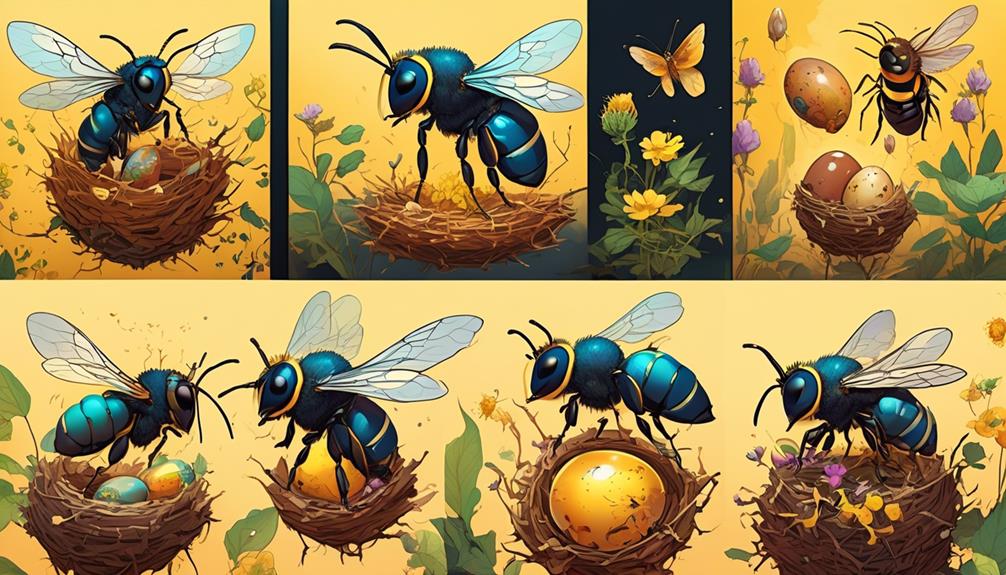
To fully grasp the lifecycle of a carpenter bee, it's crucial to start at the beginning, with the fascinating process of egg-laying and development. You see, the female bee takes the lead in this saga. She'll bore a tunnel into wood, using her strong jaws, creating a nest that's both home and nursery. This is where she'll deposit her egg, along with a provision of pollen and nectar, and then seal off the chamber with chewed wood pulp.
A period of metamorphosis follows the egg's deposition. Inside the sealed chamber, the egg hatches into a larva, which feeds on the stored food until it pupates. After pupating, an adult carpenter bee emerges, ready to take on the world. This transformation from egg to adult usually takes about seven weeks.
Interestingly, the newly emerged adults stay in their natal tunnels for several weeks, feeding on stored pollen. When they finally venture out, they're fully grown, ready to mate, and start the cycle anew. Understanding these intricacies of the carpenter bee's lifecycle gives you a glimpse into the complex and fascinating world of these industrious insects.
Carpenter Bee Mating Rituals
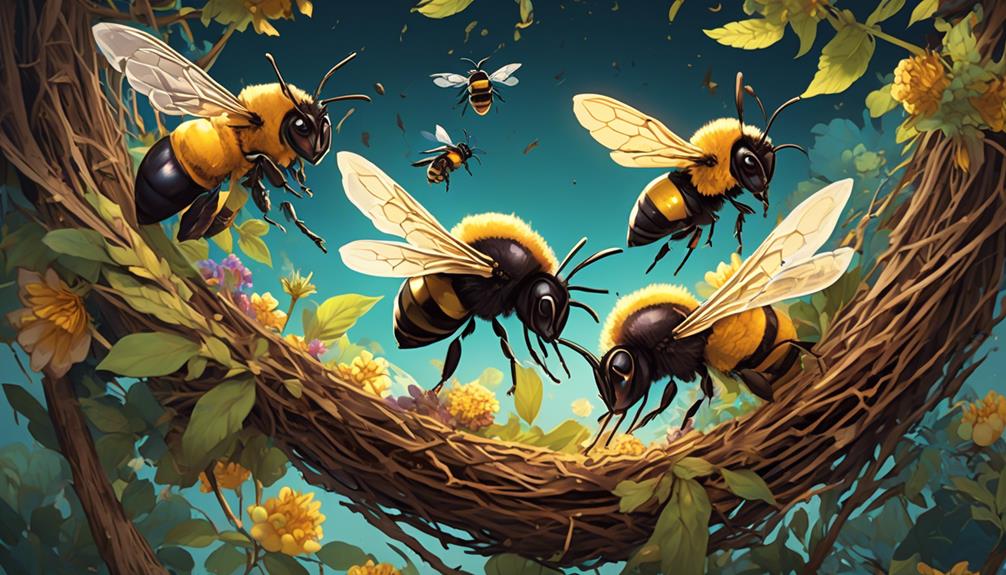
Once these fully grown carpenter bees emerge from their natal tunnels, they're primed for the next fascinating phase of their lifecycle – the mating rituals. As you might know, these rituals aren't as simple as one might think. It involves a complex series of actions, where males usually perform an acrobatic flight to attract the females.
Mating Phase | Male's Action | Female's Response |
|---|---|---|
Initial Attraction | Conducts zigzag flights | Observes and evaluates |
Courtship | Hovers around female | Shows interest or indifference |
Mating | Mounts receptive female | Allows mating |
Post this courtship display, if the female is receptive, she'll allow the male to mount her, thus leading to successful mating. It's important to note that the male dies shortly after mating, while the female goes on to start the process of nesting and laying eggs. All of these steps are crucial for the propagation of the species. Understanding these rituals gives us a deeper insight into the complex and intriguing world of carpenter bees. It's a testament to the wonders of nature and the intricate mechanisms of reproduction.
Egg Laying and Larva Stage
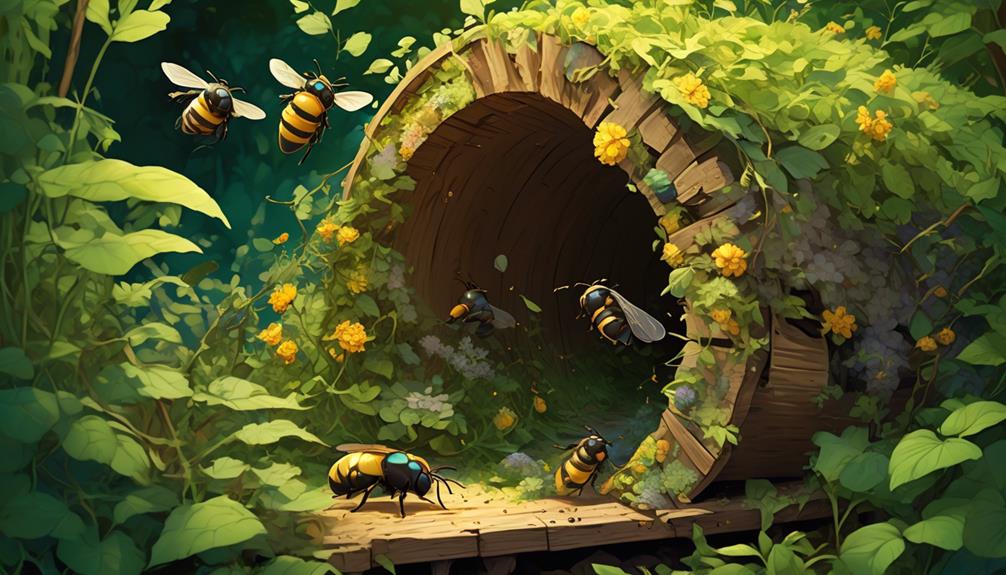
After successful mating, the female carpenter bee embarks on the crucial phase of egg-laying and nurturing the larvae, a process integral to the survival of the species. You see, she begins by constructing a nest, typically in wood, where she'll deposit her eggs. She doesn't just lay them anywhere. Each egg gets its own individual cell, provisioned with a ball of pollen and nectar for sustenance.
Once the egg is laid, the female seals the cell with chewed wood pulp. This provides a secure environment for the developing larvae. It's here that the egg will undergo metamorphosis, transforming from a simple egg into a complex, fully-formed bee.
Over a period of five to seven weeks, the larvae mature within their cells, feeding on the pollen-nectar mix. During this time, they're in their most vulnerable state, defenseless against predators and parasites. When they've consumed all their food, they'll spin a cocoon and pupate, beginning the transformation into an adult bee.
It's a complex and fascinating cycle, one that requires the female carpenter bee to undertake meticulous preparation and care for the survival of her offspring.
Cocoon Stage: The Transformation
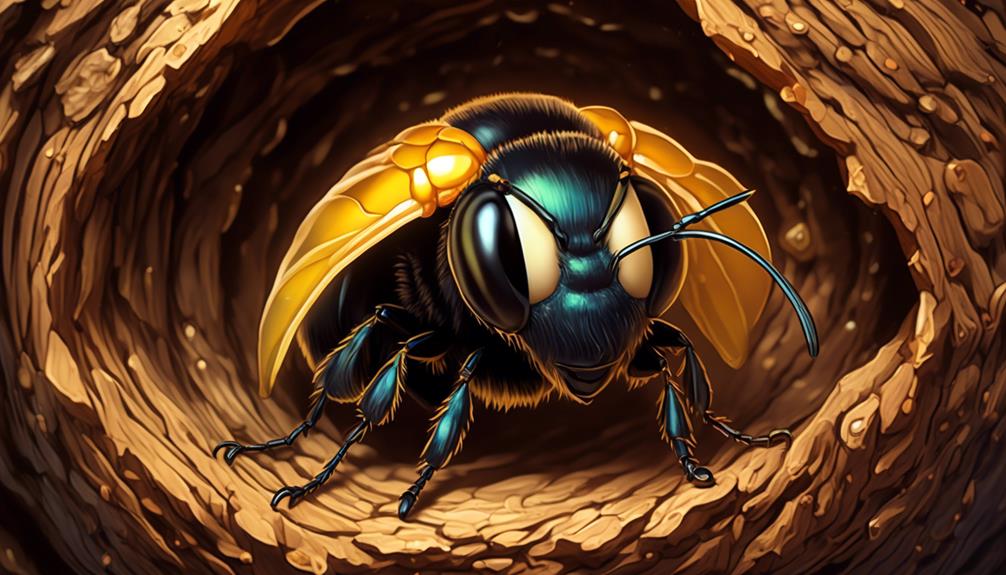
Encased within its cocoon, the carpenter bee larva embarks on a remarkable transformation into its adult form. This stage, known as pupation, is vital for the development of the bee's adult features. It's during this time that the once worm-like larva metamorphoses into a bee equipped with wings, antennae, and the ability to reproduce.
To give you a clearer picture, here's a brief timeline in markdown format:
Stage | Duration |
|---|---|
Larva | 5-7 weeks |
Pupation | 2-3 weeks |
Adult Emergence | 3-4 weeks |
You'll notice that the pupation stage is relatively short compared to others. Yet, it's a crucial period where the bee undergoes significant physical changes. During pupation, the bee's body is reorganized, old cells are broken down, and new ones form to create the adult bee's structure.
In the end, what emerges from the cocoon isn't a larva anymore, but a fully developed, adult carpenter bee. This transformation is one of nature's most fascinating processes, demonstrating the extraordinary life cycle of these essential pollinators.
Emerging Adults: The Final Phase
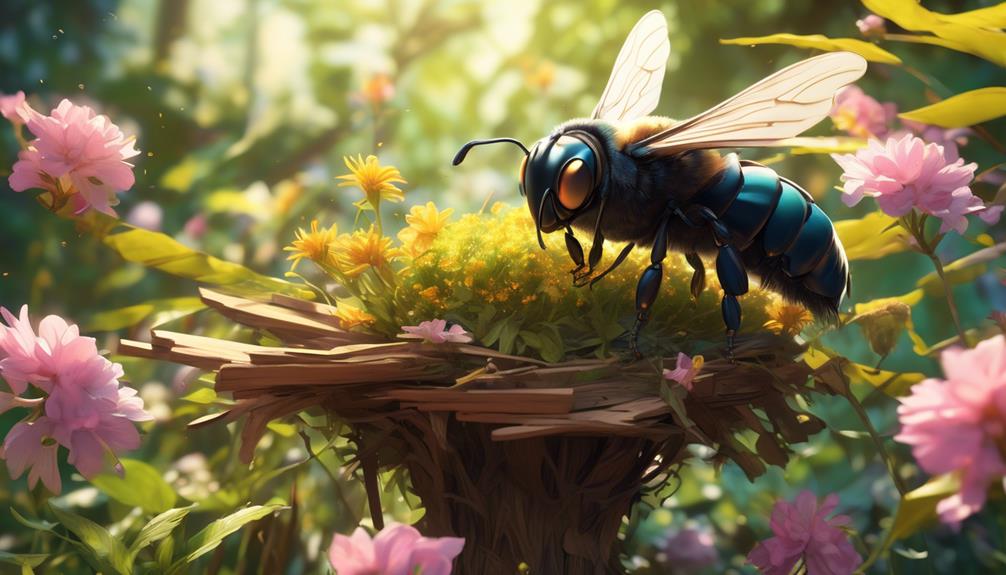
When the pupation phase is complete, you'll find that a fully matured carpenter bee, ready to face the world, emerges from the cocoon. This final stage, known as the adult phase, signifies the end of the carpenter bee's developmental cycle.
You'll observe that these emerging adults are robust, armed with a strong exoskeleton, and possess fully functional wings, making them adept fliers. They're also equipped with strong mandibles, used for burrowing into wood. At this point, they're sexually mature and ready to mate, ensuring the continuity of their species.
The timing of their emergence isn't random, as it usually coincides with spring or early summer. This synchronization is crucial because it aligns with the availability of food resources, such as flowering plants for nectar and pollen.
Interestingly, you'll find these bees aren't just solitary, but also territorial. Males, although they lack a sting, are often seen guarding nests, while females take charge of the construction and provision of food.
In essence, the emergence of the adult carpenter bee marks not just the end of an intricate developmental process, but also the beginning of a new generation, ready to start the cycle anew.
Conclusion
So, you've journeyed through the fascinating world of carpenter bee reproduction. From their unique mating rituals to the egg laying, larva, and cocoon stages, and finally, the emergence of adults, it's clear nature is a master architect.
These bees are vital for our ecosystem, a fact you're now well-equipped to appreciate.
So, next time you spot a carpenter bee, remember the intricate lifecycle that's unfolding before your eyes. It's truly a marvel of nature.

